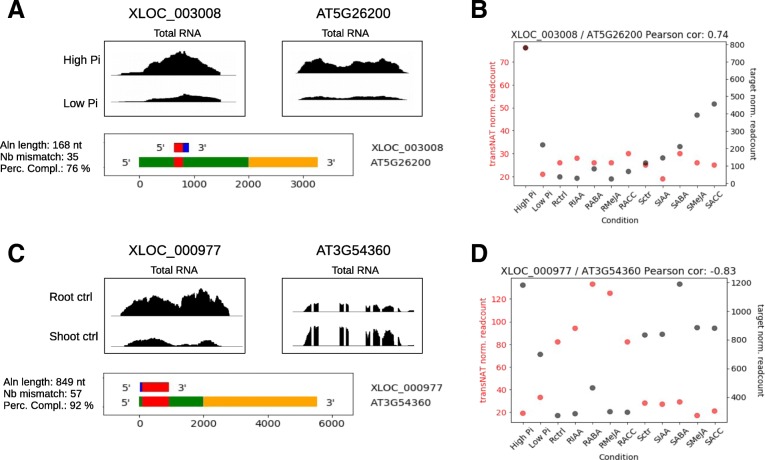Fig. 3.
LincRNAs coexpressed or anti-coexpressed with target genes containing a sequence of partial complementarity to the chromatin region including the promoter or gene body. a and b, Example of a pair showing a positive correlation between lincRNA and target gene expression. a, Density plots showing the density of RNAseq reads in seedlings grown in high or low Pi for the lincRNA XLOC_003008 (left panel) and its potential target AT5G26200 (right panel). The region of complementarity between the transcripts is indicated in red on the diagram below, with blue corresponding to RNA of the lincRNA and green and yellow corresponding to the promoter region (2000 nt upstream the transcription start site) and the transcribed region (5′ and 3’UTR, exon and intron) of the target gene, respectively. b, Correlation plot reporting the steady-state level of XLOC_ 003008 (red dots) and AT5G26200 (black) transcripts on the Y-axis for each of the 12 experimental conditions analyzed. The Pearson correlation coefficient is indicated on top. c and d, Example of a pair showing a negative correlation between lincRNA and target gene expression in control roots and shoots. Same legend as A-B for XLOC_000977 lincRNA and its potential target ATG54360. For A and C, details about the alignment length (Aln length), number of mismatch (Nb mismatch) and percentage of base complementarity (Perc compl) are indicated on the left of each panel showing the region of complementarity between the lincRNAs and the target genes

